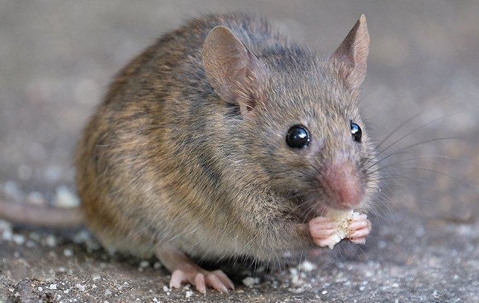It happens when you least expect it. You’re eating dinner, or watching a movie, or reading a book in bed when suddenly you hear it—small taps on the floorboards, tiny squeaks, and perhaps a tiny creature scurrying along the wall. There’s no doubt about it: you’ve got a mouse infestation.
At first glance, house mice might look innocent and friendly, but homeowners in Columbus, Ohio, beware: a mouse infestation can cause expensive problems for you and your household. Let’s talk about how to identify an infestation and the trouble it spells for you and your family.
What Do House Mice Look Like?
House mice are strong contenders for the most adorable pests. The average house mouse grows between 3-4 inches, with soft, rounded bodies and tails around half their total body length. Their colors range from brown, black, and white, though most mice are shades of gray. A house mouse has rounded ears, pink hands and feet, and a pointed face with large, dark eyes.
Not-So-Nice House Mice
Don’t be deceived by how cute a house mouse might look. These pests can bring serious trouble to your household. Let’s break down what house mice bring to your property:
- Disease: House mice are vectors for some pretty serious illnesses. Common diseases that mice harbor include salmonella, tularemia, hantavirus, and plague. Sometimes these diseases are airborne; other times, mice transfer them to the food in your pantry when they raid your house for a midnight snack.
- House damage: Mice are like mini garbage disposals, feasting on virtually anything they can. One common source of nourishment is your pantry, but if they can’t get in there, they’ll likely start gnawing through your home. Floorboards, wood paneling, pipe insulation, and electrical wiring are all fair game as mice feed their young and build their nests, weakening your home’s foundation and potentially damaging your insulation or circuits.
- A multiplying problem: Mice nest in your house because they’re looking to sustain a family. The average mice litter is 5-12 pups, and it only takes three weeks for a new litter to emerge. This means an infestation of mice can grow worse very quickly.
House Mouse Prevention Tips
House mice are notoriously difficult to keep out of the house. Because they’re so small and prolific, it’s easy for a mouse to crawl its way into your floorboards despite even the toughest prevention plan. The best thing you can do to secure your home is seal as many tight cracks around your house as possible. Check to make sure there aren’t any gaps in your household, including the shingles, crawl spaces, chimney, door frames, or anywhere your house meets the ground. Remember, mice can climb virtually anywhere and wedge themselves into the smallest of cracks, so be thorough in your property check and seal or caulk any crevices you find.
If a mouse does find its way into your house, don’t fret, mice infestations are common and happen to the most secure households. However, don’t take matters into your own hands. The best way to get rid of a mice infestation is to call the experts who know how to handle rodents. Learn more about what 1st Response Pest Management can do for Columbus residents, or schedule an exterminator today.

